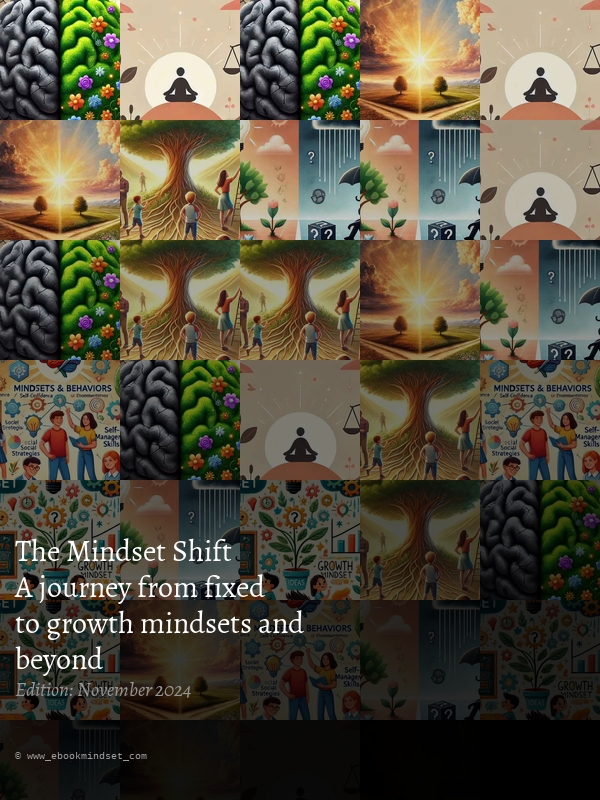Understanding Growth Mindset
Popularized by psychologist Carol Dweck, a growth mindset emphasizes that abilities and intelligence are not fixed but can be developed through dedication and hard work. This belief fosters resilience, a love of learning, and a proactive approach to challenges. It empowers students to view setbacks not as failures, but as valuable learning opportunities. Instead of fearing challenges, a growth mindset encourages embracing them as chances for growth and development. This fundamental shift in perspective benefits students immensely, impacting not only their academic performance but also their overall well-being and self-esteem. Understanding that intelligence is malleable, rather than static, encourages students to persevere through difficulties and develop a stronger sense of self-efficacy.
The Importance of Stories in Teaching Growth Mindset
Stories are powerful tools for teaching complex concepts like the growth mindset. Abstract ideas become tangible and relatable when presented through narrative. Students connect with characters who face challenges, make mistakes, and ultimately triumph through perseverance. By witnessing these journeys, students internalize the lessons and see how they can be applied to their own lives. Stories provide a safe space for exploring difficult emotions and concepts, allowing students to process information in a more engaging and less threatening way than traditional lectures or worksheets. This engagement significantly increases the chances that the message will resonate deeply and impact long-term behavior.
Inspiring Stories for Students
1. The Tortoise and the Hare
This classic fable perfectly illustrates the contrast between fixed and growth mindsets. The hare, possessing natural talent but lacking consistent effort, ultimately loses the race to the tortoise, whose unwavering determination and persistence leads to victory. The story highlights the importance of consistent effort and perseverance over innate ability. It teaches students that even with less apparent initial talent, dedication and hard work can yield remarkable results. The hare’s overconfidence serves as a cautionary tale, emphasizing the dangers of a fixed mindset and the importance of humility and continuous striving.
2. The Most Magnificent Thing
This heartwarming story follows a young girl's journey to create something magnificent. Her initial attempts are met with frustration and repeated failures, leading to feelings of inadequacy and self-doubt. However, the story beautifully depicts her perseverance and eventual triumph, emphasizing the importance of overcoming setbacks and embracing the creative process. It teaches children that failure is a necessary part of the learning process and that persistence is crucial for achieving one's goals. The message resonates deeply with students who struggle with perfectionism and fear of failure, showing them that it is okay to make mistakes and learn from them.
3. I Can’t Do That Yet
This empowering book introduces the concept of "yet" - a powerful addition to any statement of perceived inability. It transforms "I can't do that" into "I can't do that yet," shifting the focus from a sense of permanent limitation to a temporary challenge. This subtle but profound change instills hope and encourages patience and resilience. The book empowers students to approach learning with a sense of possibility and to see setbacks as opportunities for future growth. It’s a practical tool that helps children to reframe their thinking and develop a more positive self-perception.
4. Beautiful Oops!
This interactive book celebrates mistakes as creative opportunities. It takes what might typically be viewed as a failure - a smudge, a tear, an unexpected line - and shows how these "oops" moments can be transformed into something beautiful and unexpected. It fosters an appreciation for the serendipitous nature of creativity and teaches children to see mistakes not as errors to be erased, but as possibilities to be embraced. This book promotes a growth mindset by encouraging experimentation, risk-taking, and the acceptance of imperfections in the creative process. It helps students develop resilience by changing their perception of mistakes from something negative to something potentially positive and even inspirational.
5. Your Fantastic Elastic Brain
This award-winning book uses the concept of neuroplasticity – the brain's remarkable ability to grow and change – to explain how learning actually alters the physical structure of the brain. It emphasizes that effort strengthens neural pathways, making the brain more capable over time. This empowering message reinforces the idea that intelligence is not fixed, but rather a skill that can be developed through practice and dedication. The book equips students with an understanding of their brain’s potential for growth, motivating them to embrace challenges and persevere in their efforts to learn and grow.
6. The Girl Who Never Made Mistakes
This story follows a girl obsessed with perfection who believes she should never make mistakes. Her fear of imperfection leads to anxiety and avoidance, impacting her abilities. The narrative cleverly portrays the inevitable reality of mistakes, showcasing how they are not failures but invaluable learning experiences. The girl’s journey teaches children that mistakes are an inherent part of learning and growth, and that embracing imperfections allows for greater learning and self-acceptance. The story promotes a growth mindset by showing the positive aspects of making mistakes and accepting them as opportunities for progress.
7. What Do You Do With a Problem?
This engaging story presents a child facing a persistent problem. Rather than avoiding the challenge, the child actively seeks solutions, demonstrating creativity and resilience in overcoming the obstacle. The story highlights the importance of problem-solving skills and the unexpected growth opportunities that arise when facing challenges head-on. It encourages children to view problems as opportunities for learning and development. The protagonist’s proactive approach and eventual success inspire students to adopt a similar mindset, demonstrating the power of proactive problem-solving and building resilience.
8. My Strong Mind
This book focuses on the power of positive self-talk and resilience in overcoming challenges. It provides strategies for developing mental strength and embracing difficulties. It emphasizes the importance of self-compassion and positive self-affirmations. This proactive approach empowers students to approach challenges with confidence and to develop their inner strength. The book’s emphasis on positive self-talk and resilience promotes a growth mindset by teaching children to view challenges as opportunities for growth and to believe in their ability to overcome obstacles.
Therapeutic Stories Promoting Growth Mindset
9. A Recipe for Success (Example)
This fictional therapeutic story follows Toby, a young chef-in-training who is a perfectionist. He struggles with every minor imperfection, fearing failure. Every burnt cookie or imperfectly sliced vegetable sends him spiraling into self-criticism. His mentor gently guides him to see mistakes not as failures but as valuable lessons. Through a series of setbacks and successes, Toby gradually learns to embrace his imperfections and to see the creative process as a journey of learning and growth, not just a quest for perfect results. The story highlights the process of self-acceptance and the importance of viewing setbacks as stepping stones to success. It teaches children the resilience required to keep trying despite the inevitable mistakes involved in mastering any skill.
Incorporating Growth Mindset Stories in Education
Educators can effectively integrate growth mindset stories into their teaching through a variety of methods:
- Read Aloud Sessions: Engage students with expressive readings, encouraging interaction and discussion. After the story, lead a discussion about the characters' challenges, their strategies for overcoming those challenges, and the lessons learned. Focus on identifying moments of resilience and perseverance.
- Discussion Points: Facilitate discussions where students connect the stories to their own experiences. Encourage them to identify times they faced challenges, how they reacted, and how they might approach similar situations with a growth mindset perspective. Ask open-ended questions prompting reflection and critical thinking.
- Creative Activities: Engage students in creative activities inspired by the stories. This could include writing their own stories, creating artwork inspired by the characters, or acting out scenes from the books. These activities promote active engagement and deepen their understanding of the growth mindset principles.
- Reflective Journals: Encourage students to reflect on the stories in reflective journals. Prompt them to consider how the characters' actions and choices relate to their own lives, and how they can apply the lessons to their own academic pursuits and personal challenges. This reflective practice reinforces the learning and encourages self-awareness.
- Role-Playing: Use the stories as springboards for role-playing activities. Students can act out different scenarios, practicing how to respond to challenges with a growth mindset. This hands-on approach makes the concepts more concrete and memorable.
- Class Discussions: Use the stories as a basis for class discussions about perseverance, resilience, and the importance of effort. Encourage students to share their own experiences and perspectives, creating a safe and supportive environment for learning.
- Cross-Curricular Connections: Integrate growth mindset concepts into other subjects. For example, in math, discuss the importance of perseverance in solving complex problems. In science, explore how scientists learn from failures and experiments that don’t work as expected.
Conclusion
Growth mindset stories provide invaluable lessons on resilience, perseverance, and the importance of embracing challenges. By incorporating these narratives into the educational process, educators inspire students to adopt a growth-oriented perspective, empowering them to view setbacks as opportunities for learning and growth. This proactive approach equips students not only for academic success but also for navigating the challenges of life with greater confidence, resilience, and a deeper understanding of their own potential for growth and development. The long-term benefits extend far beyond the classroom, cultivating a lifelong love of learning and a belief in their ability to achieve their goals.

